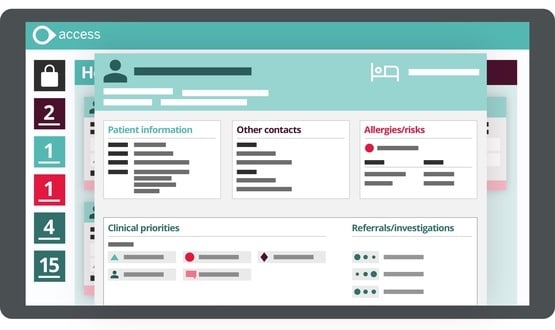XML Special Focus: Unblocking Beds
- 14 August 2003
Bed blocking is an issue faced by every acute hospital. At Queen Alexandra Hospital in the Portsmouth Hospitals NHS Trust, audit figures revealed that over 40% of beds were occupied by non-acute patients and that only 27% of the hospital’s occupied bed days were used for dealing with essential acute medical treatment.
To address the problem the hospital decided that it needed to reorganise and restructure the way healthcare was delivered. It began by focusing on redesigning workflows its Medical Assessment Unit (MAU), where physicians decide whether a patient should be admitted, referred or discharged.
In order to achieve the changes the hospital has begun implementation of a clinically-based workflow solution, piloted on the MAU. As most junior doctors rotate through the MAU for on-call duties, this created an intensive development, training and evaluation environment.
Supplied by health XML specialists
Graphnet, the clinical workflow system enables clinical staff to better manage workflow processes related to admissions and discharges, and communicates all internal referrals to sub-specialities and discharges back to GPs.
The XML-based system enables real-time bed management and provides staff with a joined-up view of the patient’s movement through the hospital, linking clinical processes to patients’ progress.
The solution also provides MAU staff with a continually updated XML record, including assessment and management plan, for every patient waiting to be admitted or receiving treatment, and the state of each of the unit’s 58 beds.
First conceived in September 2002, the electronic record system went live in the MAU at Queen Alexandra just three months later, with new functionality steadily added without antagonising staff.
According to the hospital, the system has been a vital in helping to reconfigure the unit, has enabled more effective multi-disciplinary team working, and made it much easier to manage referrals, admissions and discharges. A&E staff, for instance, found the new referral process quicker than the old bleep system.
Crucially, the system enables real-time bed allocation and bed management, allowing clinicians and nurses to see which beds that will become available throughout the day, replacing paper lists. It also provides clinicians with a complete view of the patient, from before admission, until after they are discharged. This enables far better planning and allocation of beds and better continuity of care.
An important part of the workflow solution is the Appropriateness Evaluation Protocol (AEP), a built-in audit tool that helps assess the appropriateness of admissions. By following the clinical processes incorporated into the workflow system, summary assessment documents, management plans and discharge summaries are all automatically produced.
Dr Paul Schmidt, associate specialist at the MAU commented: “Hospital information systems never link ward moves of patients to the clinical process, as this system does. It enables us to co-ordinate the movement of patients through the hospital, linking it to the clinical decisions that health care professionals make while updating a single care plan that starts on admission and ends at discharge.”
He added: “Being at the interface of primary and secondary care, the MAU is a particularly fast-paced environment where such an innovative approach is needed to respond efficiently to demands for rapidly available information when the patient moves elsewhere.”
With the most complex workflow issues have been worked out during the implementation in the MAU, a roll-out to the hospital’s acute specialist wards is now being planned.
The hospital believes that the new clinical workflow system has the potential to deliver significant cost savings by replacing paper-based discharge forms and making more effective use of staff time. Further savings should be possible through more appropriate bed allocation, and better planning and coordination of patient discharges.
Key Points:
• XML Clinically-based workflow solution for Medical Assessment Unit
• Co-ordinates the movement of patients through the hospital
• Includes XML-based electronic patient records
• Appropriateness Evaluation Protocol (AEP) built in to system
• Implemented within three months




